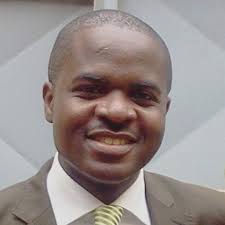Topographique du foramen mentonnier dans une population sénégalaise : Etude au Cone Beam CT
DOI :
https://doi.org/10.55715/jaim.v17i4.853Résumé
Objective: Good knowledge of the anatomical landmarks of the mental foramen (MF) is essential in dentistry, especially for optimal analgesia. The aim of this study was to investigate the topographic position of the mental foramen in Senegalese subjects using Cone Beam CT. Materials and methods: The method consisted of determining the location of the mental foramen (MF) on CBCT images by studying its position in relation to the teeth in the horizontal and vertical directions.
Results: The results show that in the horizontal direction, 46.7% of the chin foramen was located in line with the second premolar and 42.1% between the two premolars. Vertically, the mental foramen was located apical to the apex in 84.4% of cases and juxta apical in 15.6%. The mean diameter of the chin foramen in the antero-posterior direction was 3.82+/-1.08 mm in men and 2.91+/-0.63 mm in women. There was no statistically significant difference p<0.001.
Conclusion: The method used provides a good assessment of the path of the mandibular canal in relation to the apex of the mandibular premolars and molars.
RÉSUME
Objectif : La bonne connaissance des repères anatomiques du Foramen mentonnier (FM) est essentielle en odontologie surtout pour la réalisation d’une analgésie optimale. L’objectif de cette étude est d’étudier la position topographique du FM chez les sujets sénégalais au Cone Beam CT.
Matériels et méthodes : La méthode a consisté à déterminer sur les images CBCT la localisation du FM en étudiant sa position par rapport aux dents dans le sens horizontal et vertical.
Résultats : Les résultats montrent dans le sens horizontal que dans 46,7% la position du foramen mentonnier était à l’aplomb de la seconde prémolaire et dans 42,1% entre les deux prémolaires. Dans le sens vertical le foramen mentonnier était situé en apical de l’apex dans 84,4% et juxta apical dans 15,6% des cas. Le diamètre moyen du foramen mentonnier dans le sens antéro-postérieur était de 3,82+/-1,08 mm chez les hommes et de 2,91+/-0,63 mm chez les femmes. Aucune différence statistiquement significative n’a été notée p<0,001.
Conclusion : la méthode utilisée permet une bonne évaluation du trajet du canal mandibulaire par rapport à l’apex des prémolaires et molaires mandibulaires.
Téléchargements
Références
Gada SK, Nagda SJ. Assessment of position and bilateral symmetry of occurrence of mental foramen in dentate asian population. J Clin Diagn Res. 2014 ;8(2):203-5. doi: 10.7860/JCDR/2014/7257.4060.
Muinelo-Lorenzo J, Rodríguez-Pato R, Martínez-Reglero C, Salgado-Barreira A, Suárez-Cunqueiro MM. Detection of the Accessory Mental Foramina on Human Mandibles Using Cone-beam Computed Tomography: A Systematic Review and Meta-analysis. J Endod. 2021;47(8):1215-1228. doi: 10.1016/j.joen.2021.04.023.
Kamrun N, Tetsumura A, Nomura Y, Yamaguchi S, Baba O, Nakamura S, Watanabe H, Kurabayashi T. Visualization of the superior and inferior borders of the mandibular canal: a comparative study using digital panoramic radiographs and cross-sectional computed tomography images. Oral Surg Oral Med Oral Pathol Oral Radiol. 2013 ;115(4):550-7. doi: 10.1016/j.oooo.2013.01.001.
Abu-Ta'a MF, Qubain KJ, Beshtawi KR. The mental foramen, anatomical parameters through a radiographic approach to aid in dental implantology: A retrospective analysis in a sample of a Palestinian population. Heliyon. 2023 22;9(3):e13886. doi: 10.1016/j.heliyon.2023.e13886.
Kqiku L, Sivic E, Weiglein A, Städtler P. Position of the mental foramen: an anatomical study. Wien Med Wochenschr. 2011;161(9-10):272-3. doi: 10.1007/s10354-011-0898-2.
Greenstein G, Tarnow D. The mental foramen and nerve: clinical and anatomical factors related to dental implant placement: a literature review. J Periodontol. 2006;77(12):1933-43. doi: 10.1902/jop.2006.060197.
Behrouzi E, Abesi F, Ghorbani H, Gholinia H. Association between gubernacular canals characteristics and teeth eruption status: a cone-beam computed tomography study. J Clin Exp Dent. 2024 1;16(2):e145-e150. doi: 10.4317/jced.61169.
Besi F, Hozuri M, Zamani M. Performance of artificial intelligence using cone-beam computed tomography for segmentation of oral and maxillofacial structures: A systematic review and meta-analysis. J Clin Exp Dent. 2023 1;15(11):e954-e962. doi: 10.4317/jced.60287.
Krishnan U, Monsour P, Thaha K, Lalloo R, Moule A. A Limited Field Cone-beam Computed Tomography-based Evaluation of the Mental Foramen, Accessory Mental Foramina, Anterior Loop, Lateral Lingual Foramen, and Lateral Lingual Canal. J Endod. 2018 ;44(6):946-951. doi: 10.1016/j.joen.2018.01.013.
Safaee A, Mirbeigi S, Ezoddini F, Khojastepour L, Navab-Azam A. Buccolingual course of the inferior alveolar canal in different mental foramen locations: A cone beam computed tomography study of an Iranian population. Int J Appl Basic Med Res. 2016;6(4):262-266. doi: 10.4103/2229-516X.192589.
Al Jasser NM, Nwoku AL. Radiographic study of the mental foramen in a selected Saudi population. Dentomaxillofac Radiol. 1998 ;27(6):341-3. doi: 10.1038/sj/dmfr/4600388.
Fishel D, Buchner A, Hershkowith A, Kaffe I. Roentgenologic study of the mental foramen. Oral Surg Oral Med Oral Pathol. 1976 ;41(5):682-6. doi: 10.1016/0030-4220(76)90325-x.
Khojastepour L, Mirbeigi S, Mirhadi S, Safaee A. Location of Mental Foramen in a Selected Iranian Population: A CBCT Assessment. Iran Endod J. 2015;10(2):117-21.
Sisman Y, Sahman H, Sekerci A, Tokmak TT, Aksu Y, Mavili E. Detection and characterization of the mandibular accessory buccal foramen using CT. Dentomaxillofac Radiol. 2012 ;41(7):558-63. doi: 10.1259/dmfr/63250313.
Ajmal M. Evaluation of mental foramen position from panoramic dental radiographs. J Contemp Dent Pract. 2014 1;15(4):399-402. doi: 10.5005/jp journals-10024-1551.
Abdullah Bahamid A, Yousef Alsaif S, Mohamed Almansouri AS, Mefawez Alshammari S, Abdullah Alshahrani F, Ali Alhusayni H. Mental Foramen Position, Shape, Continuity, and Symmetry Among Malocclusion Patients: A Radiographic Study. Cureus. 2023 25;15(12):e51056. doi: 10.7759/cureus.51056.
Subash TS, Balaraj BM, Hema C. Determination of sex by cone-beam computed tomography analysis of mental foramen in South Indian Population. Int J Forensic Odontol .2019 ;4:6-21.
Motiwala MA, Javed F, Ghafoor R. Cone Beam Computed Tomography based evaluation of position of mental foramen and its relation to apices of mandibular posterior teeth in a sample of Pakistani population. J Pak Med Assoc. 2022 ;72(10):1963-1967. doi: 10.47391/JPMA.3358.
Al-Khateeb T, Al-Hadi Hamasha A, Ababneh KT. Position of the mental foramen in a northern regional Jordanian population. Surg Radiol Anat. 2007 ;29(3):231-7. doi: 10.1007/s00276-007-0199-z.
Sheikhi M, Karbasi Kheir M, Hekmatian E. Cone-Beam Computed Tomography Evaluation of Mental Foramen Variations: A Preliminary Study. Radiol Res Pract. 2015;2015:124635. doi: 10.1155/2015/124635.
Paraskevas G, Mavrodi A, Natsis K. Accessory mental foramen: an anatomical study on dry mandibles and review of the literature. Oral Maxillofac Surg. 2015 ;19(2):177-81. doi: 10.1007/s10006-014-0474-1.
Mohebiniya M, Kamani M. Multiple Mental Foramina: A Rare Anatomical Variation Detected by Cone-Beam Computed Tomography (CBCT). Cureus. 2024 30;16(6):e63524. doi: 10.7759/cureus.63524.
Mallahi E, Abesi F, Rajaei-Rad F, Gholinia H. Anatomical characteristics of mental foramen and canal: A cone-beam computed tomography analysis. J Clin Exp Dent. 2024 1;16(8):e1004-e1011. doi: 10.4317/jced.61861.
Téléchargements
Publiée
Comment citer
Numéro
Rubrique
Licence
Formulaire droit d’auteur et de propriété du Journal Africain d’Imagerie Médicale
Je certifie / nous certifions que j'ai / nous avons suffisamment participé au contenu intellectuel, à la conception et design du travail, ou à l'analyse et à l'interprétation des données, ainsi qu'à la rédaction du manuscrit, pour en assumer publiquement la responsabilité ; et accepté que mon / notre nom figure sur la liste des auteurs dans l’ordre ci-dessous précisé. Je crois / nous croyons que le manuscrit représente un travail scientifiquement valide. Ni ce manuscrit, ni aucune partie substantielle de ce manuscrit n’a été publié ou envisage d’être publié ailleurs.
Je certifie / nous certifions que les résultats de ce manuscrit relèvent de nos propres données collectées au cours de l'étude. Nous attestons que, si les éditeurs le demandent, nous fournirons les données / informations ou coopérerons sans réserve pour obtenir et fournir les données / informations sur lesquelles le manuscrit est basé, pour examen par les éditeurs ou leurs mandataires. Les intérêts financiers, directs ou indirects, qui existent ou pourraient être perçus comme tels par un ou les auteurs en relation avec le contenu de cet article ont été divulgués dans la déclaration d’intérêt, de même que les sources éventuelles de financement du projet.
Par la présente, je transfère / nous transférons tous les droits de propriété exclusivement au Journal Africain d’Imagerie Médicale du moment que l’article est publié par ce Journal. Le journal aura: le droit d'accorder la permission de republier l'article en totalité ou en partie, avec ou sans frais; le droit de produire des pré-impressions ou des réimpressions et de les traduire dans des langues autres, pour les vendre ou les distribuer librement; et le droit de republier l'article dans une collection d'articles sous tout autre format.
Nous donnons le droit à l’auteur correspondant d’apporter les modifications nécessaires à la demande de la revue, faisons notre la correspondance entre lui et la rédaction pour le compte de ce manuscrit, il agira en tant que garant du manuscrit pour nous.
Je certifie / nous certifions que toutes les personnes ayant apporté une contribution substantielle au travail sans être des auteurs, sont nommées dans les remerciements avec leur permission.







